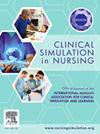Learning landscapes: The impact of simulation space design on undergraduate nursing students’ perspectives
IF 3.4
3区 医学
Q1 NURSING
引用次数: 0
Abstract
Nurses are prepared for clinical practice through theory and simulation-based learning. The design and sophistication of simulation environments differs markedly within and across nursing programs. While the impacts of Simulation Based Education (SBE) on nursing students satisfaction and confidence is well described it is less clear what impact the standards of the facilities in which simulation is undertaken has.
Aim
This research aimed to understand the perspectives of final year nursing students who used three different learning environments for simulated learning and reflect on building design decisions and the impact these have on the student experience.
Methods
This research utilized a descriptive convergent mixed methods approach surveying final year students who had undertaken simulation-based learning in three different simulation learning environments. A survey collected demographic data, asked students to rate the simulation facilities, analyzed with descriptive statistics, and asked two open-ended questions on their satisfaction and perceptions of the space.
Results
About 65 students (16.5%) completed the voluntary survey and shared their experiences and perceptions of the simulation environments. The majority of students (70%) favored a debrief room setup separated from the simulation room by one-way glass. Thematic analysis of the qualitative findings resulted in three themes: Engagement; Fidelity and Technology.
Conclusion
The environment needs to be fit for purpose for the scenario being undertaken. Students felt more positive about simulation spaces they perceived as more contemporary and were not influenced by whether facilities worked or were simulated. Prebriefing was vital to prepare students for the environment and the scenario participation required. Students preferred environments in which they were less aware of the observers.
求助全文
约1分钟内获得全文
求助全文
来源期刊

Clinical Simulation in Nursing
NURSING-
CiteScore
5.50
自引率
15.40%
发文量
107
期刊介绍:
Clinical Simulation in Nursing is an international, peer reviewed journal published online monthly. Clinical Simulation in Nursing is the official journal of the International Nursing Association for Clinical Simulation & Learning (INACSL) and reflects its mission to advance the science of healthcare simulation.
We will review and accept articles from other health provider disciplines, if they are determined to be of interest to our readership. The journal accepts manuscripts meeting one or more of the following criteria:
Research articles and literature reviews (e.g. systematic, scoping, umbrella, integrative, etc.) about simulation
Innovative teaching/learning strategies using simulation
Articles updating guidelines, regulations, and legislative policies that impact simulation
Leadership for simulation
Simulation operations
Clinical and academic uses of simulation.
 求助内容:
求助内容: 应助结果提醒方式:
应助结果提醒方式:


